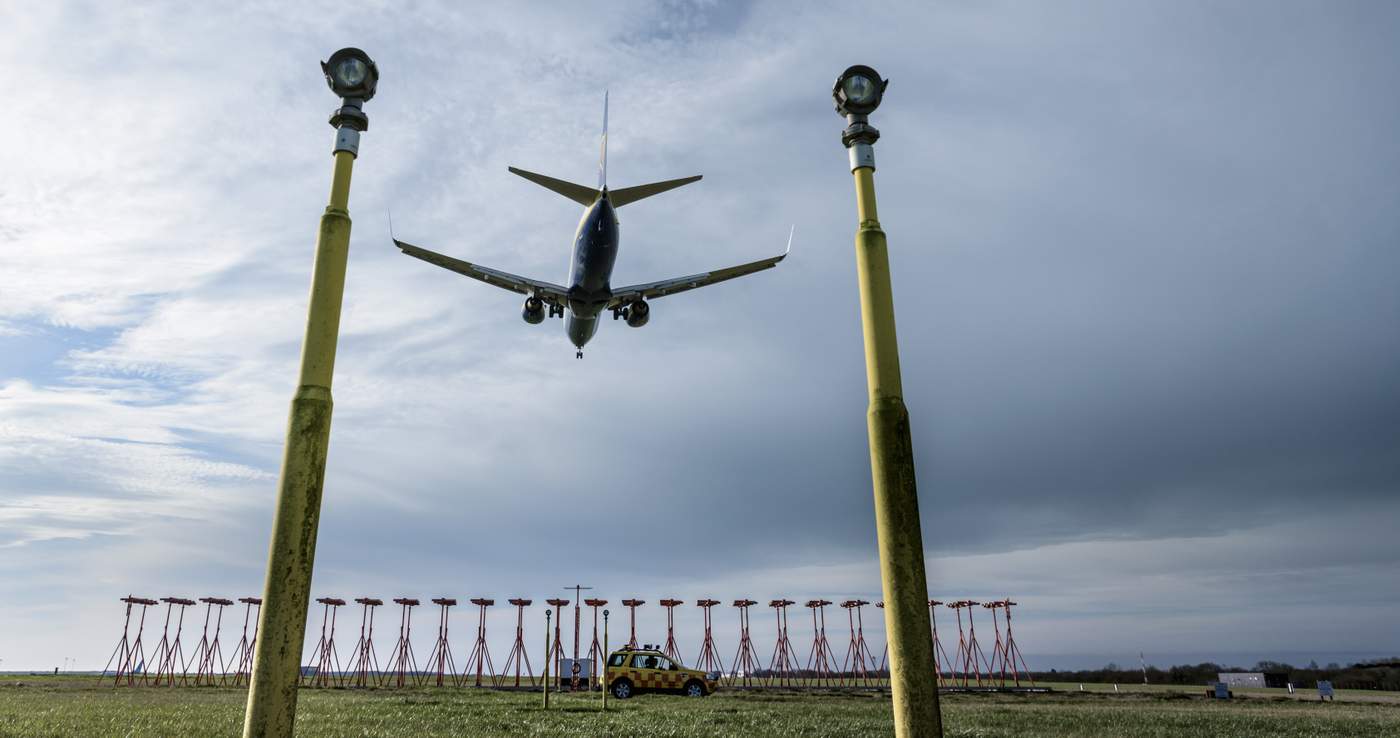Paul Jones arrived in the office early on Tuesday 10 December 2013. Fresh coffee in hand, he was keen to get some work done before the daily distraction of emails and phone calls began.
Finally, a chance to clear some work off his ever growing to-do list.
So it was with some surprise that his phone rang. It was Paul’s boss with news that was going to turn his day upside down…
Earlier that morning and 40 miles away, a private jet was on final approach into London Stansted Airport. It was cold, dark and the visibility was poor.
Upon landing, the jet taxied onto stand to reveal damage to its hull and undercarriage door. Clearly they’d hit something, but what was a total mystery.
Air traffic controllers in the tower duly despatched an engineer to the end of the runway to make an inspection and uncover the cause. There, he discovered parts of the Instrument Landing System spread across the grass and with it the dawning realisation that the private jet, flying too low on approach, had hit it just before touch-down.
At first, the reaction from the tower was relief. What could have been a terrible accident had mercifully been avoided.
But then the penny dropped.
The damage to the ILS – which is vital for maintaining normal airport operations during low visibility – would effectively rendered the runway closed until conditions improved.
Arrivals were diverted to other airports until the fog lifted, but with the forecast set to deteriorate again later in the day, the airport was facing the very real prospect of having to shut – and potentially for days - something that would tear up the travel plans of thousands of passengers at a cost of millions of pounds.
What then ensued was a battle against the clock to fix the ILS before the fog rolled back in…
Paul, having been given the news, was now racing his way around the M25. The NATS general manager for Stansted tower was abroad, so he had been called in to help manage the response. “I arrived at about 8.30am and pulling up to the control tower you wouldn’t have realised that anything was wrong. Planes were arriving and departing but I knew time was ticking away.”
Specialist NATS engineers were already on site to access the full extent of the damage and more importantly, to come up with a plan that would return the ILS to full working order before the weather turned again.
An ILS system works by transmitting a radio signal that arriving aircraft lock onto during their approach. During poor visibility it’s vital for helping pilots stay level and centred. The private jet had damaged the localiser antenna array for runway 04 – which guides planes onto the centre of the runway – and the Far Field Monitor for runway 22. This meant that if visibility did drop as expected, the airport would be unable to accept arrivals from either end of its single runway.
Diversions and flight cancellations would then be inevitable.
“We were now in full crisis response mode while at the same time needing to manage normal operations at the airport,” says Nick Millar, London Stansted’s Head of Airside Operations. “The prospect of having to close is pretty near the top of the list when it comes to nightmare scenarios for any airport, so we sat down with NATS and worked out various scenarios and how we could best manage the potential disruption, but Plan A was to get that ILS backup and running.”
The damaged parts of the ILS proved unsalvageable, so a search began for replacements. Thankfully, with air traffic operations around the country, NATS was able to locate spares and have them rushed to Stansted for reassembly.
Paul Jones again: “It was a magnificent effort from everyone involved, but getting the parts was really only the start. We now had to get the thing working again, tested and approved, all within a few hours. It was touch and go.”
Working intensively and with arriving aircraft roaring overhead, the engineers hurriedly got to work.
Finding a way to test the system was the next big challenge. “An ILS has to be regularly tested by specialist flight calibration aircraft,” says Paul Jones. “Usually these flights are scheduled months in advance, but we needed to find one in the next few hours.”
So with the engineers hard at work, Paul decided to call in a few favours.
“The calibration company the airport routinely used for these types of flights didn’t have any aircraft available, but we have a close relationship with Cobham Aviation Services so I gave them a call, explained the situation and it was agreed that a plane would be in the air later that day. It was exceptional service.”
Just hours after it was hit, and following a nationwide search for spare parts and verification by a specialist calibration aircraft, the ILS was back up and running, just minutes before the fog returned that evening.
Flights continued normally and the hundreds of passengers passing through the terminals were none the wiser.
Only those involved knew how close things came, until now.
“Yes there are other air traffic service providers out there, but few would have been able to provide the support and resources that NATS did on that day.
"If we had been working with anyone else, we probably would have had to shut the airport for at least a day, if not longer. The cost to our business and reputation would have been significant.”
Paul Jones concludes: “This was undoubtedly one of the most challenging days I’ve ever experienced, but the engineers were the real heroes.
“It can be easy to sometimes see air traffic services as simply a cost airports have to bear, but I like to think that this demonstrates the difference we make and the value we add.”


